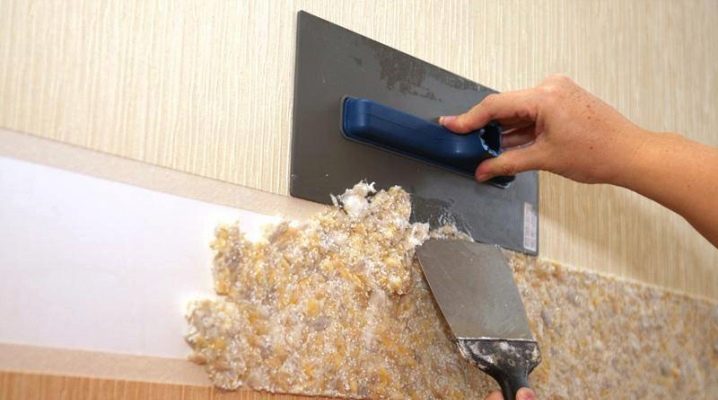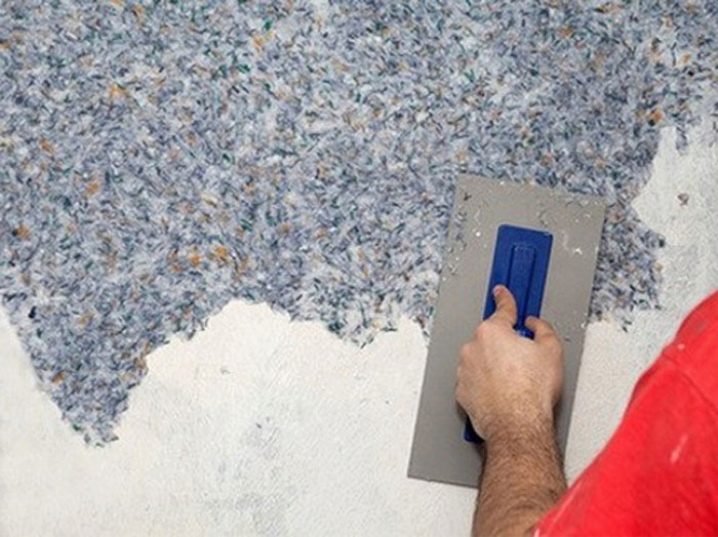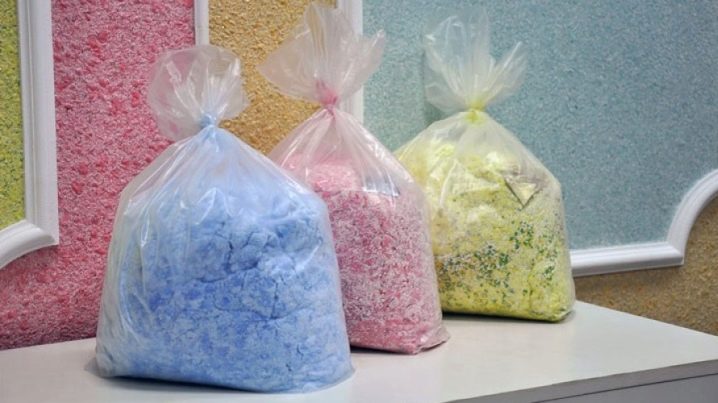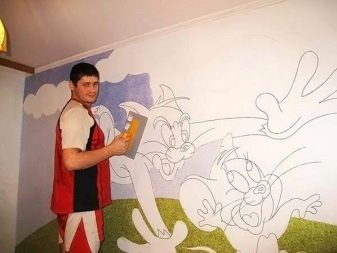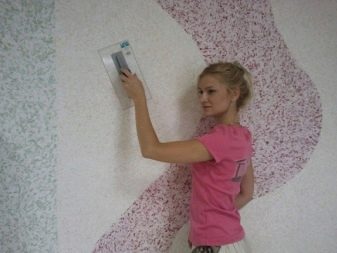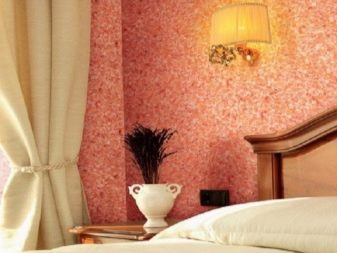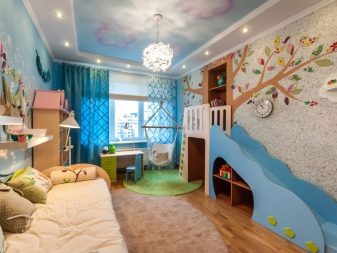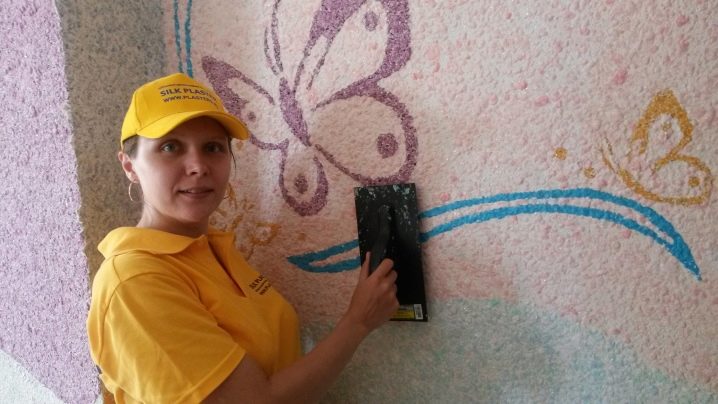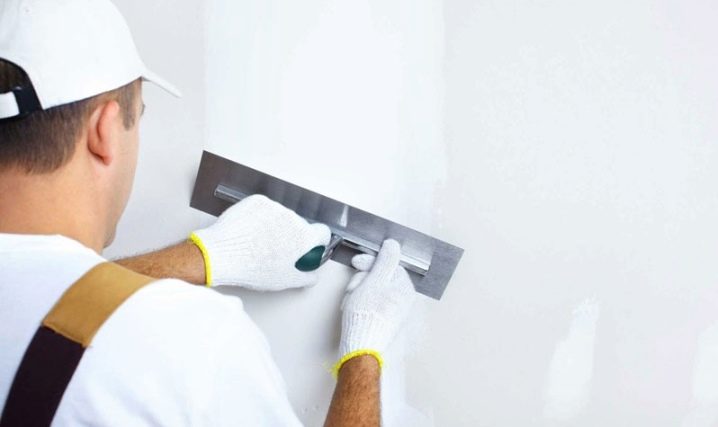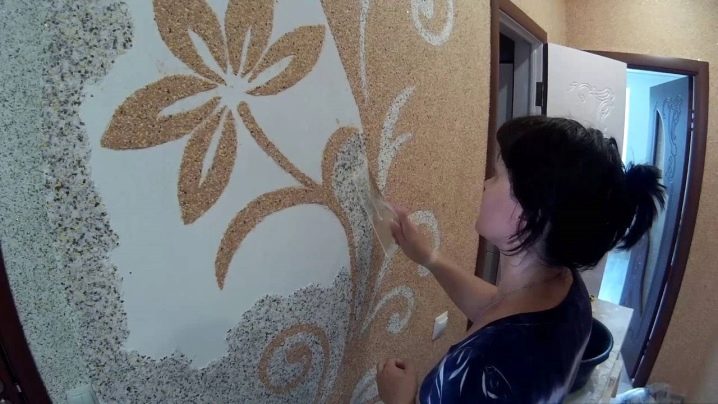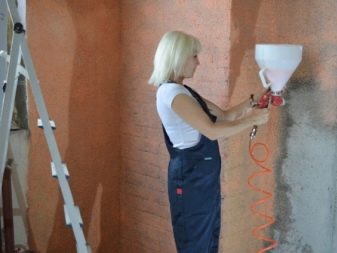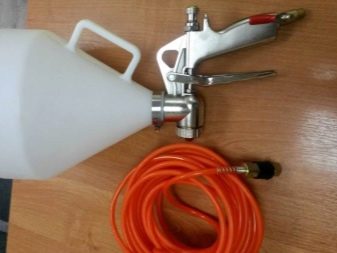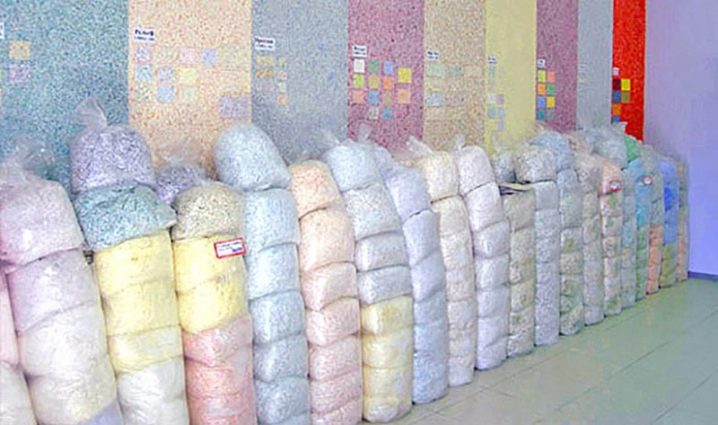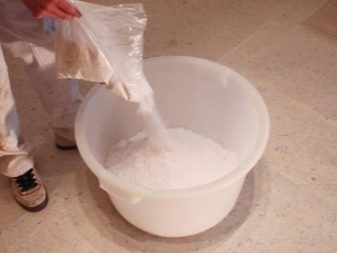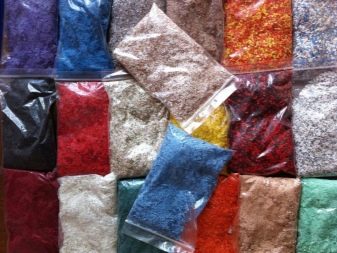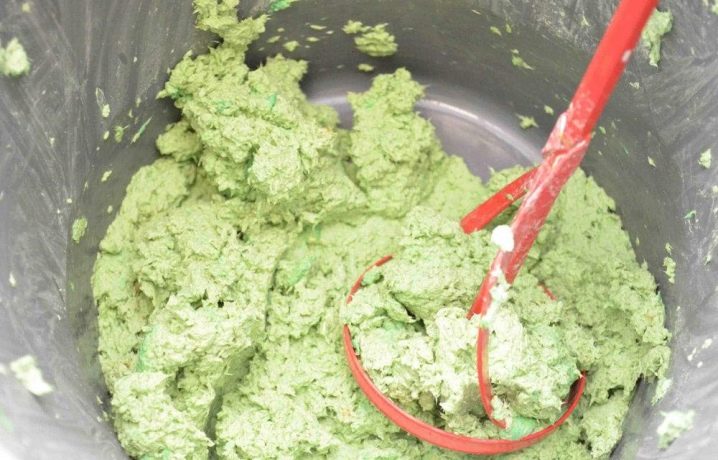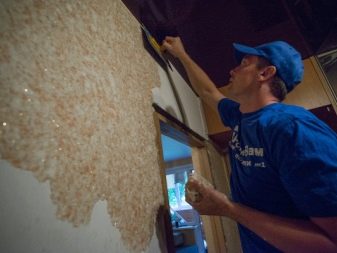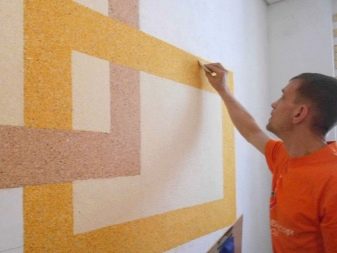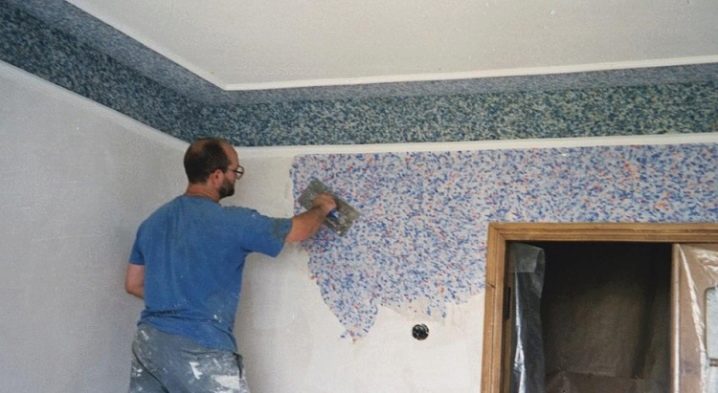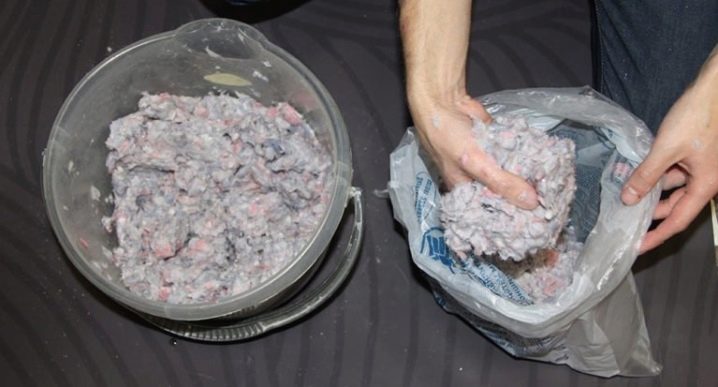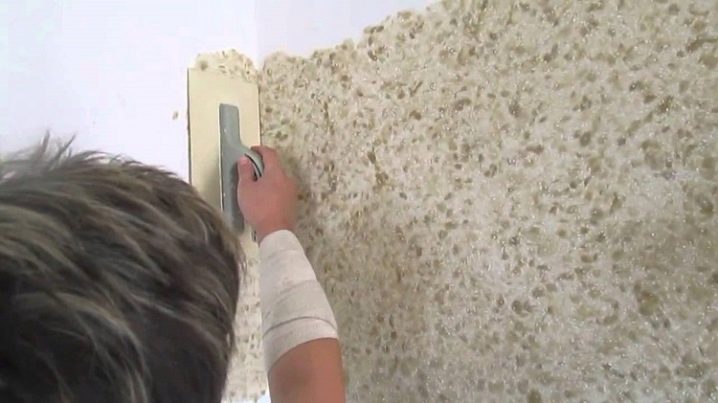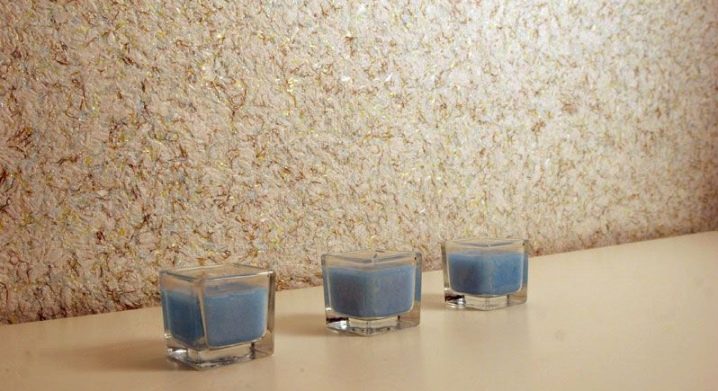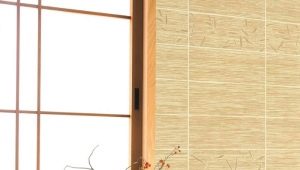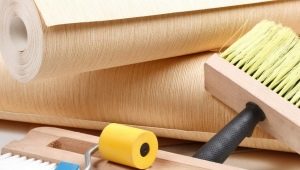Liquid wallpaper: what is the consumption per 1 square meter?
Wall cladding provides for the accounting of material consumption. If rolled finishes are easy to calculate, it is more difficult to calculate the material based on powder or ready mix, which is due to several factors. Of course, in the world of modern technology, you can use a special online calculator, but its indicators are approximate and do not always say that correctly.
To understand what the consumption of liquid wallpaper on 1 square. m, you need to know the features of the material and fineness of the lining.
What is it?
Liquid wallpaper is a unique finishing material with a volumetric surface texture, which is sold in packaged form on the basis of a dry or raw mixture. The second name of the facing is “wet wallpaper”. The method of applying a creamy mass resembles facing a wall with decorative plaster, although liquid wallpaper does not apply to them, since it does not have sand and plaster in the composition.
Depending on the degree of density they are applied with a construction roller, a plastic spatula or a special gun. The finished mixture does not need to be adjusted in consistency, warm water is added to dry opil-like fibers with glue impregnation and soaked for the time specified on the package.
Usually, the mass swelling process takes about 12 hours.
This material is an excellent soundproofing: this lining is the most dense compared to its counterparts. In addition, liquid wallpaper, which are colored or white (for painting), make the walls warm, which is especially noticeable in the cold season. The uniqueness of the material is the possibility of combining individual shades with each other, the inclusion of original additives in the composition, among which marble crumb, mother of pearl, mica flock are especially popular. If desired, the components are added to the mass, varying the degree of concentration.
They allow you to add a special look to the coating texture.
What does it depend on?
The calculation of the amount of material will allow:
- eliminate the lack of material;
- meet the planned budget;
- choose a quality type of material with your own preferences.
Accounting for the amount of the planned area of facing is carried out in advance. It is important to consider:
- application technique (often the material is applied twice: a background layer, then a pattern layer);
- layer density (from 3 to 6 mm);
- skills of the master (uniformity of a facing layer is of great importance);
- Experience: Often, newcomers of raw materials takes more.
An important factor is the preparation of the walls: wallpaper is considered quite unpretentious in the work of the material with which you can align small cracks, pits, smooth tubercles. The type of surface matters: on a smooth sanded wall it is more difficult to control the uniformity of the cladding layer. If the base is unnecessarily uneven, the material consumption per square meter will be more. In this case do not rely on the properties of the material to level the surface: it is important to process the wall with a putty, after which to prime all the machined surfaces for maximum adhesion to the wallpaper.
In addition to the features of the walls, it is important to consider the method of preparation of the solution. If the technology indicated on the package is broken, the material is diluted with cold or hot water in the wrong proportions, poorly mixed, differing in weight with lumps,this will change the volume of the material, respectively, by changing the rate of calculation. It is important to take into account such factors as decoration: If the wallpaper creates drawings, it will require an increase in the amount of material.
Matters tool for applying liquid wallpaper on the wall. If it is a gun, the lining will be economical and more convenient. In this case, it will be possible to save from one pack to 1 square. m taped area. The mechanical method is simple, it allows pasting faster.
Manually (using a roller or spatula) will take longer, and more material will go.
How much to take?
In order to correctly calculate the amount of necessary raw materials, you need to build on the type of material. Usually powder is sold in packages weighing 1 kg. Following the correct technique of mixing the mass, per 1 square. m facing should take no more than 300 grams. This means that a pack of dry material will be enough for 3.3 square meters. m. walls. That is, there remains a margin for scrap or level alignment of the layer.
If you take the liquid wallpaper as a basis, 1 kg of the finished mixture covers about the same: 3-4 square meters. m wall. Some speak about the profitability of such material and describe the consumption in half, considering that the mass is enough for 6-7 square meters. mHowever, in reality the situation is different. You should not make the layer too thin: so you can bare the wall, it will look ugly, creating ripples instead of a lush lining. It is worth considering that Often, manufacturers, being reinsured, add 10% more material to the package. So they beat the lack of raw materials in the work and attract the attention of buyers to their products.
Control batch
Actual material requirements may differ from calculations made. The calculation is not so important for budget varieties of liquid wallpaper (based on cellulose). However, for a silk-fiber wallpaper, every bag counts, because this lining is not cheap. For this decorative coating, a control batch is used with a test application of wallpaper on the surface of a concrete wall of a selected room in a place that will be covered with furniture.
This technique will allow you to understand how much material is still needed, and to purchase it, if necessary, as long as it is available in the same batch.
Calculation without errors
In order to approach the veneer responsibly, it is necessary to determine exactly where and in what volume the veneer will be held. It may be:
- blank wall;
- certain functional area-accent;
- wall and ceiling cladding.
In the first and second cases, the calculation is simple: you need to multiply the length by the width, then correlate the number of square meters with the amount of material at the rate of 0.3 kg per 1 square. m. If the lining is performed on all the walls of the room, it is important to measure the dimensions of the windows and doorways by deducting from the main area of the room. For example, if you plan on facing a room with an area of 20 squares minus windows and a door, the calculation would be: 0.3x20 = 6 kg. In theory, if you follow the correct technique for making liquid wallpaper, this amount will suffice. However, taking material at the same time, especially if it is a ready-made mixture, and the master is a beginner, is fraught with a shortage of raw materials.
Do not forget that the manufacturer indicates the approximate data.
It makes sense to ensure that after lining there is little material for possible dismantling. This is due to the fact that without treating the dried surface with a special acrylic varnish, the lining may suffer from accidental mechanical damage and exposure to moisture. If in the future you need to adjust the damaged area, the balance will come in handy: it will be identical in color from the same batch and batch.
And no need to worry that the material dries and deteriorates: it is well stored after drying in a closed plastic bag, and for its work it is only necessary to dilute it with ordinary water.
Wet mix storage is not permitted: it will deteriorate.
Do not be afraid of excess mixture, soak the mass in partial portions. This is appropriate only when decorating, in which the material is diluted separately, adding special additives and a coloring pigment before dilution with water.
If the raw material is not enough, it is difficult to dilute exactly the same mass with the same saturation of the hue.
Reviews
According to the masters engaged in facing the walls with liquid wallpaper, the consumption of dry material and the finished wet mixture is somewhat different. It is estimated that one bag of the second species is 10-20% more than the same amount of material of powder varieties. Experts note that if you use a special spray gun, 1 kg of material is enough for 2 square meters. m more than when working with a roller. In this case, the masters pay attention to the mismatch of the calculation of the material, using an online calculator and in fact in practice.
On how to properly apply liquid wallpaper on the wall, you can find out further.
